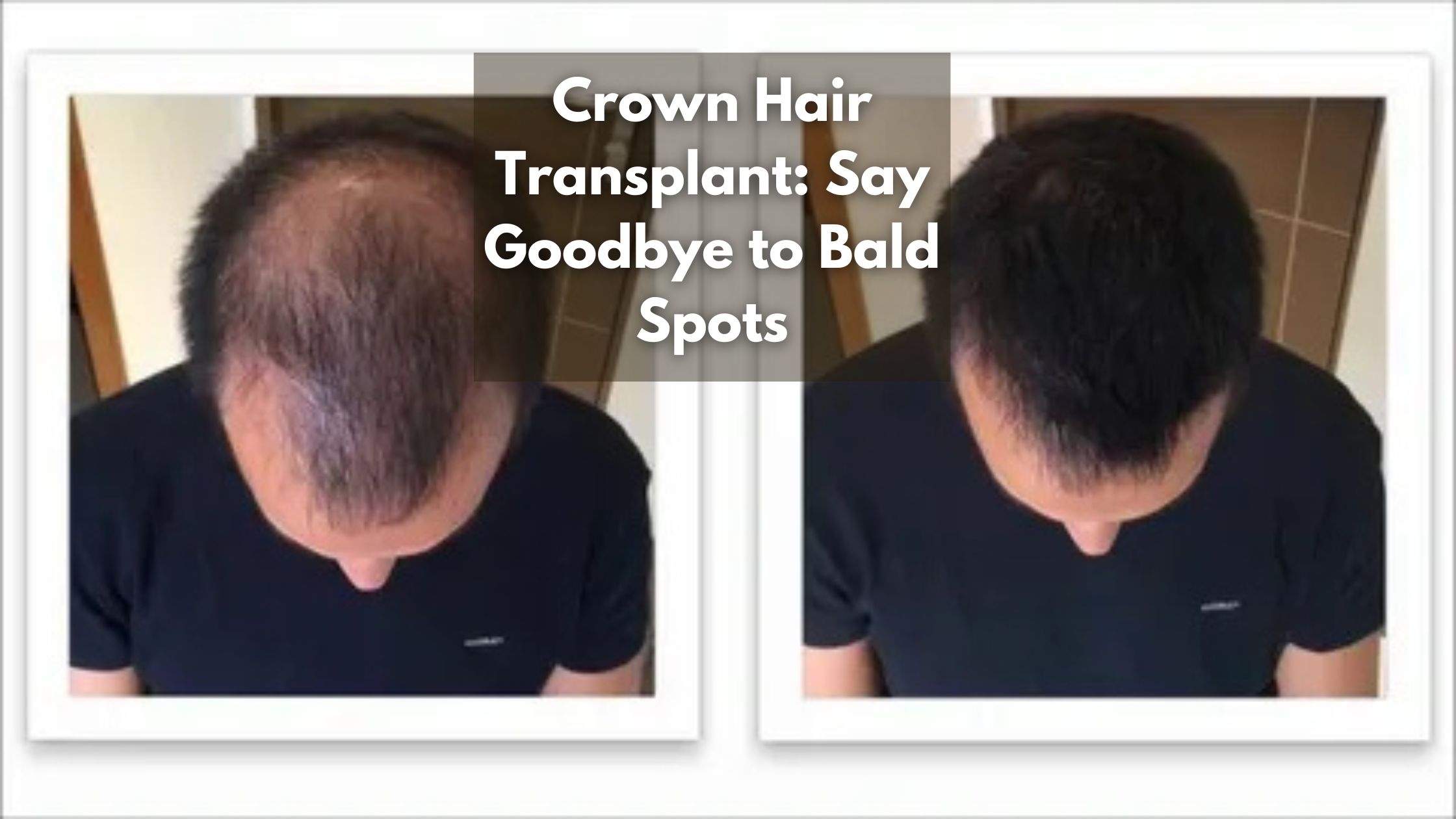Hair loss, particularly in the crown region, can be a serious concern for many people. The crown is one of the most visible areas of the scalp, and thinning or balding in this region can impact confidence and self-esteem. While various hair restoration methods are available, a crown hair transplant remains one of the most effective and permanent solutions. This procedure helps individuals regain a natural-looking head of hair, restoring both their appearance and confidence.
Understanding Crown Balding
Crown balding is a common type of hair loss, typically seen in men experiencing male pattern baldness. This condition is often classified using the Norwood scale, which tracks hair loss progression. The crown area tends to thin out gradually before developing into a noticeable bald spot. Crown baldness has several causes, including aging, hormonal imbalances, genetics, and specific medical disorders. Unlike frontal hairline recession, which may be easily camouflaged, crown balding is more challenging due to the circular pattern of hair loss. This makes a crown hair transplant a specialized procedure requiring precise graft placement to achieve natural coverage.
What is a Crown Hair Transplant?
Healthy hair follicles from a donor area—usually the back of the scalp—are surgically extracted and transplanted into the bald or thinning crown area during a crown hair transplant.
- Follicular Unit Extraction (FUE): Hair follicles are extracted and transplanted into the crown area. There are no linear scars from this minimally invasive procedure.
- Follicular Unit Transplantation (FUT): Individual follicular units are extracted and transplanted after removing a strip of the donor area's scalp. This approach works well for people who need a lot of grafts.
Both techniques ensure the transplanted hair blends seamlessly with the surrounding hair, creating a natural appearance.
Benefits of Crown Hair Transplant
A crown hair transplant offers several advantages over non-surgical hair restoration methods, including:
- Permanent Results: The transplanted hair is naturally resistant to DHT, the hormone that causes hair loss, ensuring lasting growth.
- Natural Appearance: Advanced techniques ensure the new hairline looks natural, even in the crown’s swirl pattern.
- Low Maintenance: Unlike wigs or hairpieces, transplanted hair needs only routine washing and styling without any special maintenance.
- Boost in Confidence: A fuller crown enhances overall appearance, helping individuals feel more comfortable in social and professional settings.
The Procedure: Step-by-Step
- Consultation and Assessment: A specialist evaluates the extent of hair loss, discusses the patient's goals, and determines the best approach for the crown hair transplant.
- Hairline and Transplant Plan: A strategic design is created to ensure the transplanted hair follows the natural pattern of the crown.
- Extraction of Donor Hair: FUE or FUT removes healthy hair follicles from the donor region.
- Graft Preparation and Implantation: The extracted follicles are carefully implanted into the crown area at the correct angle and density.
- Post-Procedure Care: Patients receive aftercare instructions, including medication to reduce swelling and promote healing.
Recovery and Expected Results
Patients can expect mild redness and swelling in the treated area for a few days after a crown hair transplant. The initial healing takes about 7-10 days, after which scabs fall off. The transplanted hair may shed during the first 2-3 months—a normal part of the growth cycle. By the fourth to sixth month, new hair begins to grow, with full results typically visible within 12-18 months. A successful crown follicle transplant provides permanent, natural-looking coverage in the bald or thinning area.
Who is a Good Candidate?
Not everyone is an ideal candidate for a crown hair transplant. The best candidates include individuals who:
- Have stable hair loss (not actively progressing)
- Possess sufficient donor hair for transplantation.
- Are in good health and do not have conditions that may affect healing
- Have realistic expectations about the procedure’s outcome.
To ascertain eligibility, a consultation with a hair transplant specialist is required.
Risks and Considerations
While a crown hair transplant is a safe procedure, it does carry some risks, including:
- Temporary redness, swelling, and discomfort
- Shock loss (temporary shedding of existing hair near the transplant area)
- Uneven growth in the early months
- The need for a second procedure if the initial transplant does not provide sufficient density
An experienced surgeon significantly reduces these risks and ensures the best possible outcome.
Conclusion
A crown hair transplant is a game-changing solution for individuals struggling with hair loss in the crown area. With advanced techniques like FUE and FUT, patients can achieve permanent, natural-looking results that restore their confidence. While the procedure requires patience during recovery, the long-term benefits outweigh the temporary discomfort. People thinking about it should speak with a reputable clinic to get the best results from a crown follicle transplant. Beverly Hills Hair Restoration is a trusted name in the industry, offering expert solutions to help individuals regain a fuller, healthier head of hair.
